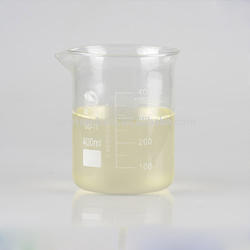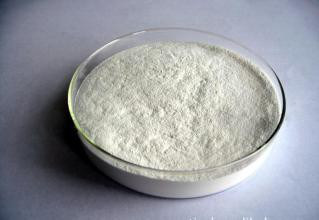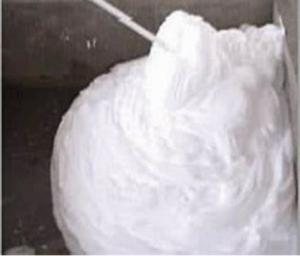Professional solutions on concrete addtives, Concrete Foaming Agent, Superplasticizer, CLC Blocks Additives, and foaming machine
(What percentage of plasticizer should be used in concrete)
What Concrete superplasticizers
Superplasticizers (SPs) have been used in concrete production since the early 1970s. Using them has allowed significant improvement of concrete properties without increasing cement consumption. Superplasticizers enable obtaining cast and self-compacting mixtures with cone slumps of 20 cm and 26 cm, respectively, with a moderate water demand and producing high-strength concrete based on ordinary Portland cement and aggregate with low permeability, high corrosion resistance, etc. Adding superplasticizers is a prerequisite for making high-performance concrete (HPC), reactive powder concrete, etc. However, the overdosage of superplasticizers will lead to undesirable workability, which may not be suitable for concrete construction. The optimum dosage of superplasticizer that can be added to regular concrete is around 1% when the main concern is the early compressive strength. Some of the first SPs were additives that belonged to the joint naphthalene–formaldehyde (NF)-type group. At an additive content of 0.5–1% by cement weight, they allow increasing the concrete mixture cone slump from 2–4 cm to 20–22 cm. Under conditions of equal mixture workability, due to a decrease in W/C, the strength of the concrete with NF SP at 28 days is up to 30–40% higher than that without additives. At the same time, the concrete density and water resistance significantly increase, and several other properties improve. P-type SP, based on polyacrylates and polycarboxylates, reduces the definite mixture water demand by more than 30%. If concrete mixtures with traditional SP quickly lose their workability and are not sufficiently stable, combinations with SP of this type remain in a plastic state for 1.5–2 h. The high retention of concrete mixes with type P SP makes them particularly attractive for monolithic construction and long-term transportation. Like other SPs, they are also successfully used in the precast concrete industry for heat and moisture concrete treatments.
What percentage of plasticizer should be used in concrete?
The percentages of superplasticizers by weight of cement are limited to 1%, 1.25%, and 1.5% by individual concrete production batch. Some plasticizers or materials used in concrete are Ligno sulfates and their derivatives and modifications, salts of sulphonates hydrocarbons. Polyglycerol esters, acid of hydroxylated carboxylic acids and their derivatives and modifications. Carbohydrates. Pozzolans, such as fly ash and silica fume, along with silicic acid, are the most commonly used mineral admixtures in high-strength concrete. The cheapest plasticizers are surfactants based on lignosulfonates. Hydrolysis production wastes—technical lignosulfonates (LST) added into concrete mixtures. Usually, 0.15–0.25% by cement weight is widely used in concrete technology. Adding 0.8–1% of LST, approximately the same liquefaction can be achieved as with conventional SP content; however, the concrete strength decreases by 1.5 times or more. This is a consequence of a corresponding decrease in the cement hydration degree and an increase in the entrained air volume by 2–2.5 times. The stabilizing effect of LST on the cement hardening processes increases with an increase in the content of the so-called reducing substances (RS) represented by sugars or carbohydrates such as xylose, glucose, galactose, etc.
Concrete superplasticizers play a vital role in improving the quality
Concrete superplasticizers play a vital role in improving the quality and reducing the cost of construction. Superplasticizers are particularly suited to the manufacture of high-strength concrete for construction. Ready-mix concrete, precast concrete, shotcrete, and high-performance concrete are the significant applicants of superplasticizers. They are chemical admixtures that have water-reduction capabilities that range from 5.0% to 40.0% in concrete mixes. They are usually classified according to the raw materials used, such as naphthalene, melamine, lignosulfonates, and polycarboxylic acids. With investment and support from regional governments for construction, the demand for superplasticizers is about to grow aggressively. The global concrete superplasticizers (CSP) market is expected to reach USD 4.77 Billion by 2020, growing at a CAGR of 8.2% between 2015 and 2020. This growth is fuelled by high demand from emerging economies and because of perceived ecological benefits. The use of these superplasticizers increases the efficiency of their applications. Individual superplasticizers have application-specific needs that are differentiated by placement, cost, and efficiency. Polycarboxylic acids are the latest and expensive superplasticizers used in high-end constructions such as airports and government infrastructure. Polycarboxylates are third-generation superplasticizers that have revolutionized the market with their ability to reduce the water-to-cement ratio by 40.0%, even at low dosages. They are also suitable in hot weather conditions and can be transported long distances. They can be used in all applications, particularly high-strength and self-compacting concrete applications.
Price of Concrete superplasticizers
Concrete superplasticizers particle size and purity will affect the product's Price, and the purchase volume can also affect the cost of Concrete superplasticizers. A large amount of large amount will be lower. The Price of Concrete superplasticizers is on our company's official website.
Concrete superplasticizers supplier
If you are looking for high-quality concrete additives, please feel free to contact us and send an inquiry. (sales@cabr-concrete.com). We accept payment via Credit Card, T/T, West Union, and Paypal. TRUNNANO will ship the goods to customers overseas through FedEx, DHL, by air, or by sea.
(What percentage of plasticizer should be used in concrete)







